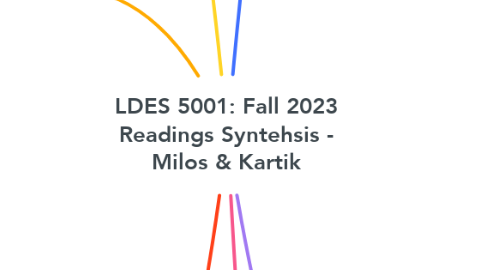
1. Multidisciplinary Learning
1.1. Can we overcome the interdependence of disciplines by adopting different approaches to learning based on interests in the field? (Kartik)
1.2. I can examine the inner workings of the USA from a hyper-capitalist or Marxist standpoint, and that can lead me to entirely different conclusions. In this case, though, wouldn't capitalism and Marxism both count as threshold concepts? So, which one takes precedence? (Milos)
1.3. which threshold concepts take precedence when you approach the same question from two different ideologies (e.g.: capitalist v socialist worldviews)? (Milos)
2. Scalability and Access
2.1. How can high-impact practices be scaled to large populations, given the finite amount of resources in bigger universities, too? (Jessie)
2.2. High-impact practices and pedagogies like problem-based learning address the issue by making learning contextual and allowing students to be involved in the process of learning/expedition of learning. How can these expeditions be created at scale to reach students from underserved backgrounds? How can we give students more agency within the entire learning ecosystem? (Kartik)
3. Theory to Practice
3.1. Faculty Approaches
3.1.1. Do instructors know how to lead learners towards the understanding of threshold concepts and how do they know when learners have successfully grasped the concepts? (Andres)
3.1.2. Could students teach themselves and others from their cultural or language perspective, with the professor taking on a supporting role to guide the students on the side? (Sicong)
3.1.3. The student example in the book who said she would “hang in there with greater confidence because now she knew she would eventually find a way of coming to understanding.” How much of this reassurance is on the student and how much is on the teacher? How much uncertainty will motivate our students to work harder? And at what point would uncertainty translate into discouragement? (Melanie)
3.2. Student Focused
3.2.1. How can we design a learning environment where liminality feels more comfortable, and how can we ensure that students don’t give up when encountering a threshold concept? Would knowledge that other students had struggled and eventually grasped the material support students in this critical moment (like we explored with belonging exercises)? (Kartik)
3.2.2. What can university educators do to support students in these liminal states?(Milos)
3.2.3. I also kept thinking about the tile metaphor from our previous reading - how students’ knowledge are all tiles that when put together form a picture of understanding. How do we teach students to zoom out and see the design of the tiles form? (Melanie)
3.2.4. Which of Kuh (2008) 's high-impact practices could effectively address the barriers keeping learners stuck? Can you discuss one of the barriers presented below and how one high-impact practice might address it? (Jess)
3.3. Equity and Assessment
3.3.1. How can these high-impact practices be designed to benefit students equitably? How are such outcomes measured and assessed? (Melanie)
3.3.2. How can these high-impact practices be designed to benefit students equitably? How are such outcomes measured and assessed? (Jessie)
